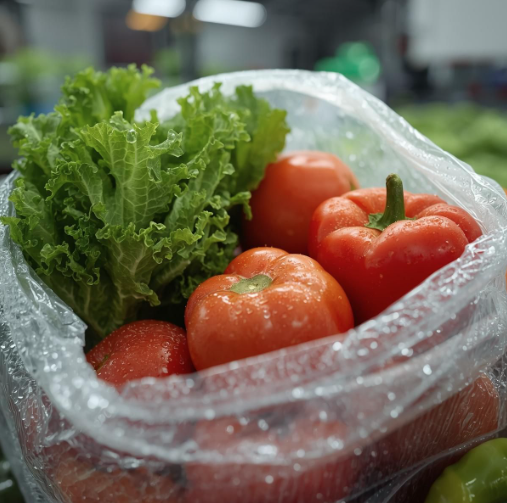How Blown Film Extrusion Works — A Simplified Guide
- Freelancer Developer
- Jun 24
- 2 min read
Updated: Aug 13
Blown film extrusion is at the heart of many flexible packaging products — including layflat bags, poly tubing, gusseted bags, and more. At M Plastics, this process is the foundation of everything we manufacture.

Even though it sounds complex, the concept is relatively simple: take plastic pellets, melt them down, and use air to form them into a continuous tube of film. From there, the film can be printed, slit, gusseted, or converted into bags.
Step 1: Feeding and Melting Resin
We begin with LDPE resin pellets, sometimes blended with other additives for color, slip, or anti-static properties. These pellets are fed into the extruder — a large, heated barrel with a rotating screw inside.
The screw pushes the material forward while the heat melts it into a molten state, ready for shaping.
Step 2: Forming the Film Bubble
Once melted, the plastic is forced through a circular die, forming a thin, continuous tube. As it exits the die, air is blown into the center, inflating it like a bubble.
This is what gives blown film its name.
The size and pressure of the bubble, along with the speed of the take-up rollers, determine the width and thickness of the film.
Step 3: Cooling and Collapsing
The bubble rises vertically into a tower, where it is cooled by air rings and then collapsed by rollers into flat film. If gussets are needed, boards are used to fold the film at the sides during this stage.
The flattened tube, also called a "web," is then directed into the next stages: printing (if required), slitting, or bag converting.
Step 4: Printing (If Needed)
If a customer requests logos, instructions, or barcodes, the film is routed through a flexographic printing press before it’s converted. We use custom plates to apply ink in precise patterns directly to the surface of the film.
Step 5: Bag Conversion
Finally, the film is converted into bags — which includes cutting, sealing, adding gussets, punching holes (for wicketing), and applying perforated lips. For wicket bags, the stacks are boxed and prepared for high-speed packing use.
What Makes Blown Film Special?
Blown film offers a high degree of versatility:
Can be made in a variety of widths and gauges
Supports gussets, vent holes, and lip configurations
Works well for both flat and three-dimensional packaging formats
Compatible with food-safe and industrial-grade requirements
It’s a process that balances art and science — small changes in pressure, speed, or resin mix can significantly affect the final product.
Final Thoughts
Understanding how blown film extrusion works helps customers, buyers, and even team members better appreciate the precision behind every poly bag or liner. It’s not just melting plastic — it’s a carefully calibrated system that delivers strength, clarity, and consistency with every run.




Comments